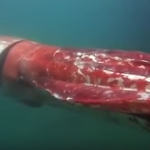This weekend marked the beginning of a new scientific expedition, investigating how leaked radiation may be affecting marine life around the Fukushima Daiichi nuclear power plant in Japan. The cruise is carrying 17 scientists, led by Ken Buesseler from Wood’s Hole:
[Nicholas] Fisher [of Stony Brook University] is leading the effort to study how marine life takes up radionuclides into its tissues. Because 3 months have passed and most isotopes, particularly the short-lived iodine-131 with an 8-day half-life, have decayed considerably, he doesn’t expect to see any toxicity. However, there will still be detectable levels in organisms such as brown seaweed, which can store iodine at 10,000 times the concentration in the water. Such a measure might help researchers understand how the isotopes move through the food chain, even up to seafood-eating humans.
Meanwhile, Japanese researchers continue to keep a close eye on the water close to the plant. Calculations by the French Institute for Radiological Protection and Nuclear Safety (IRSN) in Cherbourg have calculated that, close to the Fukushima plant, there is a risk of harm to marine life, particularly to animals born in the spring. Fisher hopes that by directly field-testing the water in the area, more precise measurements can be added to their calculations.
*Update, 3 June…in addition to the well-known isotopes iodine-131 and cesium-137, the cruise will measure the spread and bioaccumulation of rarer isotopes such as plutonium, strontium, and tritium, about which little is known. The extensive data set he expects to gather could take up to a year to analyze.
Read the full story on Science Insider. And cross your fingers that they don’t find any 3-eyed fish.





